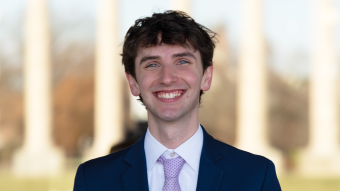
Nov. 12, 2025
Contact: Brian Consiglio, consigliob@missouri.edu
Researchers at the University of Missouri are working to develop a new platform for testing treatments for heart valve stiffness—a condition caused by calcium buildup that can make it harder for the heart to pump blood efficiently.
As people age, calcium can accumulate in the aortic valve — the heart’s “door” that opens and closes with each beat to keep blood moving through the body. When too much calcium builds up, the valve stiffens and struggles to function properly, which can eventually lead to heart failure.
To better understand and treat this condition, Mizzou researchers Shiyou Chen and Dunpeng Cai, faculty in the School of Medicine’s Department of Surgery, recently developed the first-ever “humanized” model of aortic valve calcification — a breakthrough that could accelerate the discovery of effective new therapies to stop or even reverse calcium buildup.

“Aortic valve disease affects a lot of people, particularly middle-aged and older adults,” Chen said. “There is no effective treatment for the condition currently. You can do surgery to repair or replace the valve, but surgery is not always an ideal option for older adults. Hopefully our translational work can enable the research community or pharmaceutical companies to quickly identify the first-ever effective treatment.”
To bring that vision closer to reality, Cai and Chen designed and executed an innovative experiment. They implanted small pieces of human heart valves into a small piece of a human artery and then attached that artery segment to the aorta of a mouse, along with immune cells from the same human patient.
“Dr. Cai’s exceptional microsurgery skills were essential for the success of this study,” Chen said. “Drs. Lindsey Saint and John Markley in the Division of Cardiothoracic Surgery also made significant contributions by providing human tissue samples.”
By characterizing the progression of aortic valve calcification in this “humanized” model over time, the stage is now set to test potential treatments for the condition, which could lead to medicine to stop or reverse calcium buildup in the aortic valve.
Chen said their research — funded by the National Institutes of Health — thrives at Mizzou because of interdisciplinary collaboration, with scientists, surgeons, clinicians and veterinary medicine experts all working on the same campus.
“Mizzou is very supportive of our research, which makes it possible for our work to be impactful in the medical field,” Chen said. “With heart disease being the leading cause of death worldwide, I hope our work has the potential to help a lot of people down the road.”
“Novel humanized aortic valve calcification model” was published in Circulation Research.



